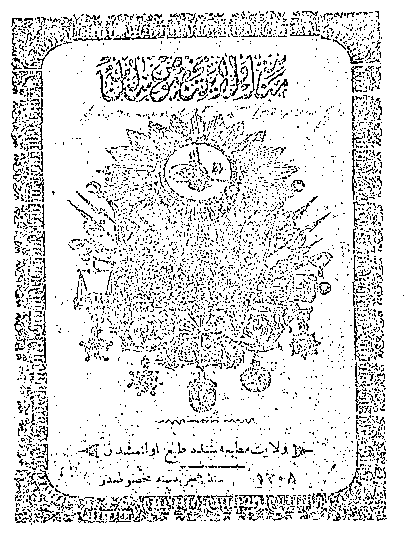
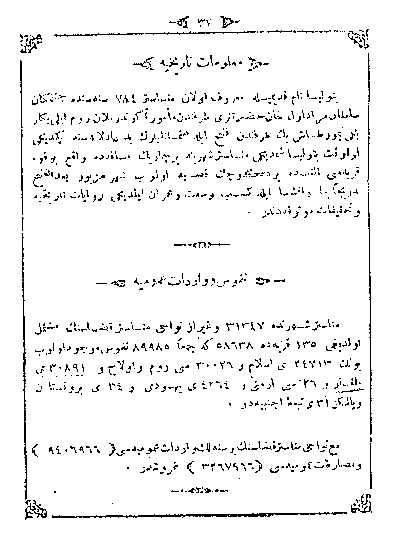
II. Statistical information from the Turkish yearbook of 1902 for the Bitola Vilaet.


1. As Appendix No 2, I am inserting the title page of the Yearbook.
2. In the Appendix No 3 there are given the following data for the city
of Bitola (called Monastir in Turkish):
The total population of the city is given as 89,985 people consisting
of:
a/ Moslems (Turks, Albanians, etc.) 24,713
b/ Greeks and Vlahs 30,036
c/ Bulgarians 30,891
d/ Jews 4,264
Note: The number of the other small minority groups are not given here. The Yearbook does not refer separately to Turks, Albanians and the other Moslem ethnic groups as Gypsies and Bulgarians, but puts them under the general name as ‘Moslems'. After the Balkan war of 1912-13, a considerable number of Moslems left not only the Bitola Vilaet, but also other provinces in Macedonia.
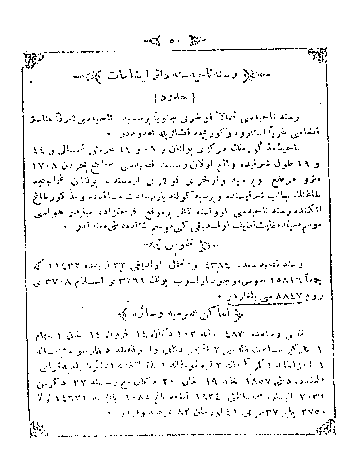
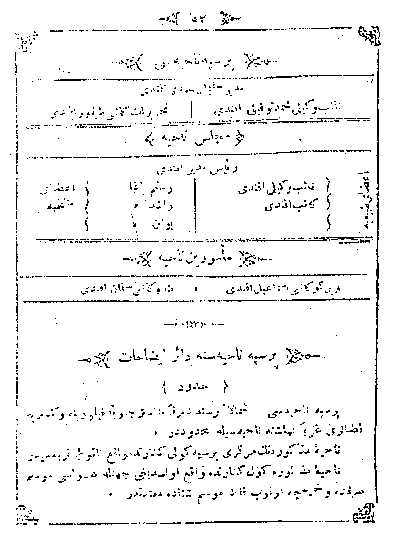
3. On page 50 the Yearbook gives for the district of Resen the following
data (see Appendix No 4):
a/ Moslems 3,261
b/ Greeks 3,708
c/ Bulgarians 8,847
Note: In this district there were no real Greeks. As Greeks were considered
the so-called Grekomans (Grkomani) Bulgarians, who remained loyal to the
Greek Patriarchate at Constantinopol (Istanbul) as their spiritual leader,
and also some Grecianized Vlahs.
4. On the pages 52 and 53 is written about the district of Prespa and
the following information is given (see Appendix No 5):
Total population in the district 8,581 people, and divided as follows:
a/ Moslems 1,765
b/ Greeks 2,038
c/ Bulgarians 4,778
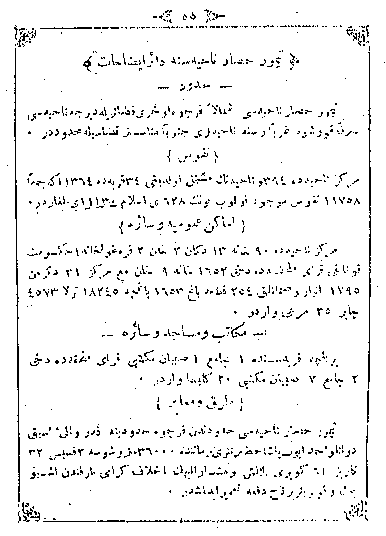
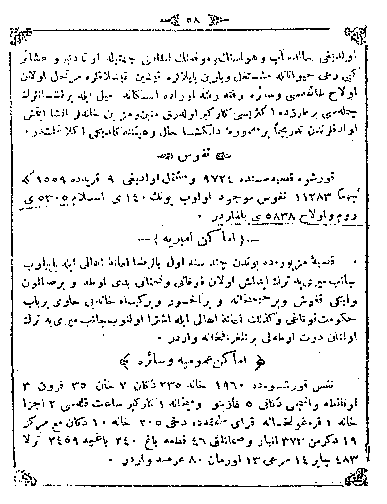
5. On page 55 of the Yearbook information is given about the district
of Demir Hisar and the following statistics (see Appendix No 6):
Total population in the district is given as 11,758 people, and divided
as follows:
a/ Moslems 628
b/ Bulgarians 11,130
6. On page 58 for the district of Krushevo the total number of the population
is given as 11,283, and divided as follows (see Appendix No 7):
a/ Moslems 140
b/ Vlahs and Greeks 5,305
c/ Bulgarians 5,838
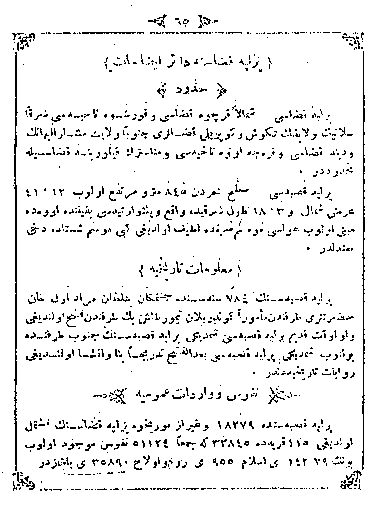
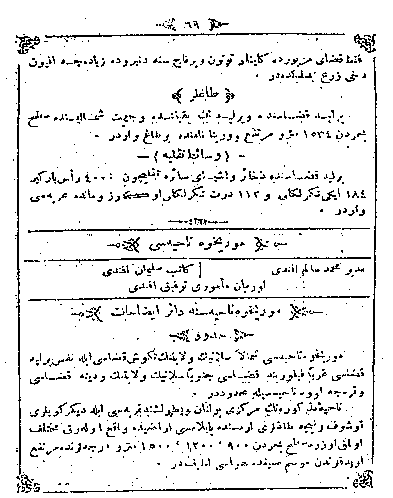
7. On the page 65 the population of the district of Prilep is given
as 51,124 people, and divided as follows (Appendix No 8):
a/ Moslems 14,279
b/ Vlahs and Greeks 955
c/ Bulgarians 35,890
8. On the pages 69 and 70 of the Yearbook for the nahiya of Morihovo
is given the total population of 8,124 people, and divided as follows (Appendix
No 9):
a/ Greeks 303
b/ Bulgarians 7,821
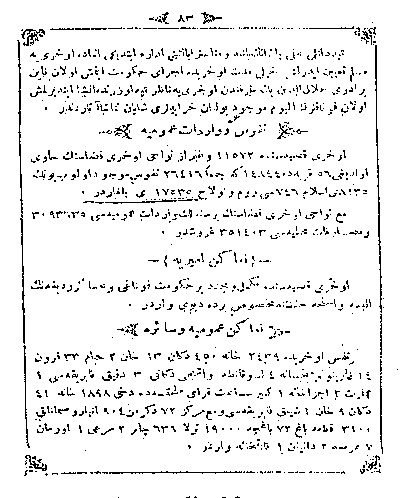
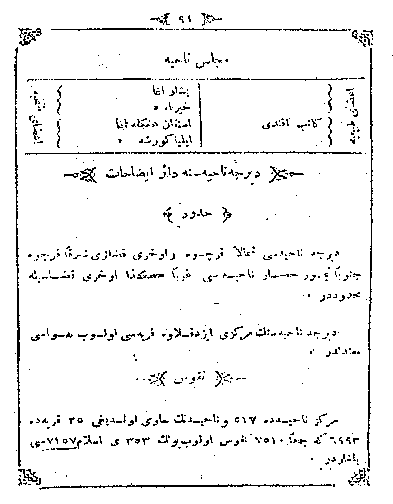
9. On page 83 the population for the district of Ohrid is given as 26,416
people, and divided as follows (Appendix No 10):
a/ Moslems 8,135
b/ Vlahs and Greeks 746
c/ Bulgarians 17,535
10. On page 91 the population of the nahiya of Debartsa is given as
7,510 people, and divided as follows (Appendix No 11):
a/ Moslems 353
b/ Bulgarians 7,157
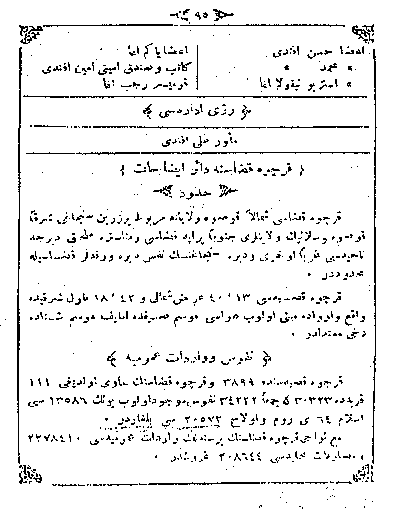
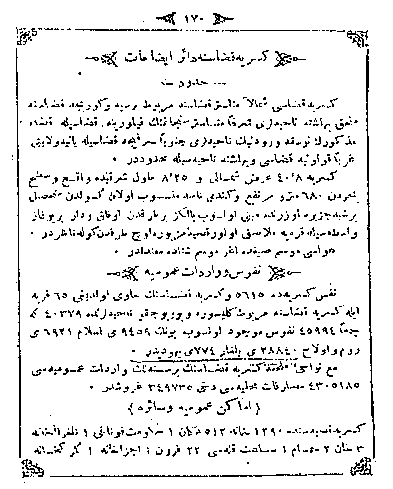
11. On page 95 of the Yearbook the population of the district of Kichevo
is given as 34,222 people, and divided as follows (Appendix No 12):
a/ Moslems 13,586
b/ Greeks and Vlahs 64
c/ Bulgarians 20,572
12. On page 170 the population of the district of Kostur (Kastoria)
is given as 45,220 people, and divided as follows (Appendix No 13):
a/ Moslems 9,459
b/ Vlahs and Greeks 6,921 c/ Bulgarians 28,840
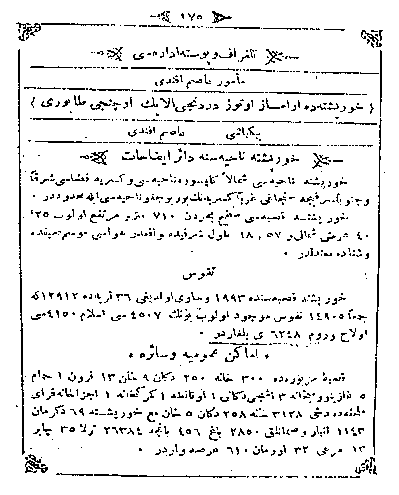
13. On page 175 the population for the district of Hrupishta is given
as 14,905 people, and divided as follows (Appendix No 14):
a/ Moslems 4,507
b/ Vlahs and Greeks 4,150
c/ Bulgarians 6,248
Note: It should be noted that the Yearbook reliably pointed out the ethnic Bulgarian frontiers to the southwest: the regions of Kastoria and Hrupishta included. Thus the Turkish statistics confirmed the works of the 19th-early 20th century academic authorities on the region: both European and Bulgarian (Ami Bove, Henry Brailsford, Gustav Weigand, Vasil Kanchov, etc.)
[Previous] [Next]
[Back to Index]